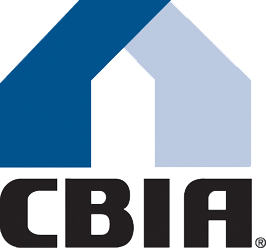By Ali Sahabi of Optimum Group, LLC
President, Building Industry Association (BIA) Baldy View Chapter
September is National Preparedness Month and this is especially important for homeowners because the home is the most important protection against severe weather events. Southern California’s weather is the envy of most of America at this time of year and today’s state-of –the-art new homes and new home communities are built to the highest safety standards in history. However, when it comes to emergencies, the better your preparation – the better you will weather the event. Even if you don’t need to resort to emergency measures, a solid home safety inspection could save you money by identifying problems that are consuming more energy or water than you intend.
Start your preparation with what is frequently the most overlooked aspect of your home – your electrical system. Inspect the circuit breakers and fuses that protect the electrical wiring and equipment in your home from overloading. Breakers trip from overloads and are the safety valves of your home’s electrical system. Familiarize yourself with your master circuit breaker. It generally is located near the smaller circuit breakers. Tripping the master breaker cuts off electricity to the whole house so this inspection should be done in broad daylight. Circuit breakers may be reset by first switching the breaker to full off and then back to full on. Make sure your path to your circuit breaker is unimpeded by plants or other objects and can be located easily with a flashlight.
Then, check for worn cords, defective appliances, electric motors or appliances with a voltage requirement higher than what the circuit was designed to handle. Unplug everything connected to it and reset it to see if an item you unplugged is defective and needs repair or replacement. If the circuit trips when nothing is connected to it, call a licensed electrician right away.
Ordinarily, small appliances that require personal attendance while operating may be plugged into any outlet. However, operating many small appliances or one large appliance on a single circuit can overload it. If this happens frequently, contact a licensed electrician to discuss whether your home needs additional wiring.
Ground Fault Circuit Interrupters (GFCI’s) are receptacles in your kitchen, bathrooms and outdoors and are safety devices that are commonly installed where small appliances (such as hair dryers) are used near sources of water to protect against appliance malfunctions or dropping appliances into water. GFCIs cut the flow of electricity to the appliance within a fraction of a second if they detect a change in the flow of current to and from the appliance. One GFCI breaker may control up to four outlets. If a breaker trips during normal use, a faulty appliance may be at fault. So test your GFCI receptacles monthly by pressing the ‘test’ button. This will trip the circuit. To return service, press ‘reset’.
Then, conduct a home energy audit – this will reveal if your home is losing energy, gauge how efficient your heating and cooling systems are and help you conserve electricity. Some places to inspect where cold or damp air commonly seeps from homes include gaps around baseboards, wall and ceiling junctures, electrical outlets, switch plates, window frames, weather stripping, fireplace dampers, attic doors, window-mounted air conditioners and foundation seals.
On your home’s exterior, look at the areas where two different building materials meet, such as corners and areas where siding or brick come together with chimneys or the foundation. If you find leaks, seal them with caulk, weather stripping or the same material as the original seal.
In older homes especially, you may have insufficient insulation in the ceiling and walls. Your attic door should be insulated and close tightly. Openings around pipes, ductwork and chimneys should be sealed. Look for a vapor barrier (tarpaper or a plastic sheet) under the attic insulation. Flexible caulk should be used to seal any electrical boxes in the ceiling. If your home lacks a vapor barrier, consider painting interior ceilings with vapor barrier paint. This reduces the amount of water vapor that can pass through the ceiling, which reduces your insulation’s effectiveness.
Inspect your heating and cooling equipment. Check ducts and pipes located in unheated spaces and that your water heater and hot water pipes are insulated. Dirt streaks around your ductwork, especially near the seams, are evidence of leaks. If you have a forced-air furnace, replace your filters as soon as they are dirty. Even if they aren’t, replace them every 30 to 60 days.
For more information about home safety, visit www.nahb.org/forconsumers, www.myhomepress.com or www.biabuild.com on the web and have a great autumn.

















